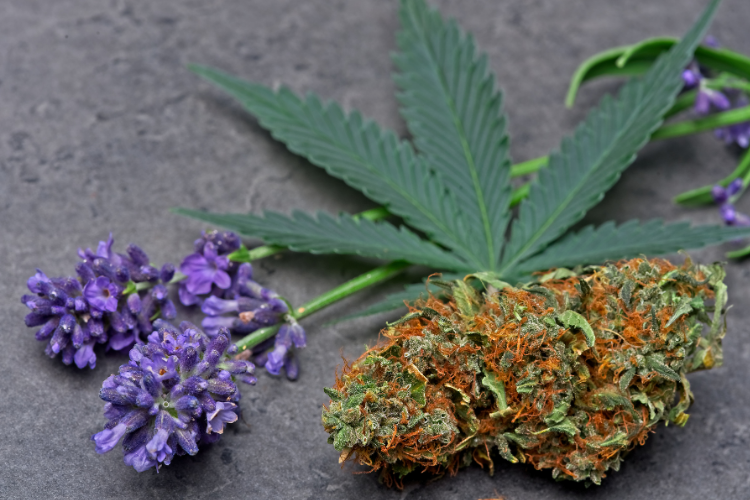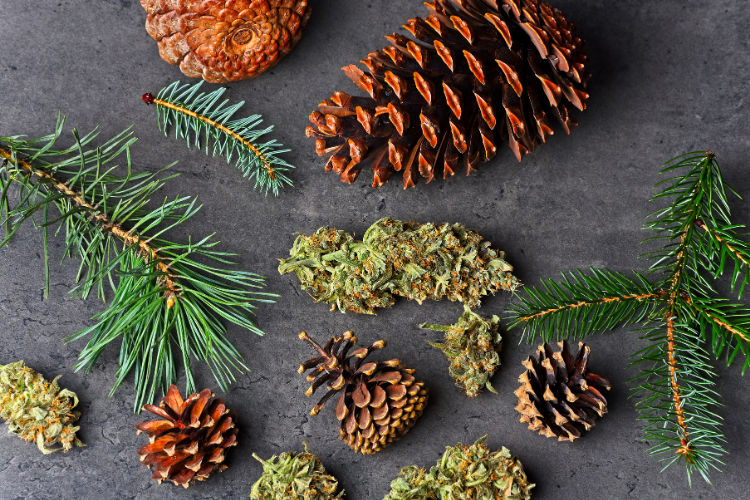If you read our blog with any frequency, you know that we’re pretty big on terpenes, the aromatic “essential oils” found in cannabis and countless other plants, trees, even animals! In nature, these fragrant and flavorful oils serve as chemical messengers, repelling insectile predators, among other beneficial uses. But when we turn to the effects terpenes have on our bodies, things get really interesting!
Because research suggests they impart all sorts of effects such as helping relieve pain, stress, and anxiety, terpenes may help us manage a number of chronic medical conditions gently, safely, and sustainably. Terpenes work in conjunction with cannabinoids such as THC and CBD, and they’re a part of what’s called the “entourage effect,” wherein the hundreds of compounds in the cannabis plant support and strengthen one another for some truly notable medical effects.
In today’s post, we’ll share a few tips on how to use terpenes for effective and sustainable relief from a number of hard-to-treat conditions.
How to Use Terpenes: Best Terpenes for Pain

Until recently, some researchers believed terpenes only contributed sensory information like aromas and flavors. But a 2008 study on the terpene caryophyllene found that, just like THC and CBD, terpenes can interact directly with the Endocannabinoid System (ECS), one of the body’s major regulatory networks.
This comes in handy when it comes to the question of managing chronic pain. In fact, a rodent-based study confirmed that caryophyllene is an effective pain-killer on top of its anxiolytic—or anxiety-reducing—qualities.
Caryophyllene is found in numerous strains of cannabis, but it’s not the end of the story. One study showed that the bright and cheerful terpene limonene imparts pain-fighting effects too. Elsewhere, multiple studies have shown that linalool—also found in lavender—helps combat some types of pain, and might one day supplant or even replace costly and dangerous opioids.
How to Use Terpenes: Best Terpenes for Anxiety

The most common mental health disorder, anxiety isn’t a single condition but a complex family of related symptoms. In PA, it’s a qualifying condition for the state’s medical cannabis program. Fortunately, research suggests that terpenes can help. Just as lavendery linalool can reduce pain, one 2010 animal study demonstrated that the terpene counteracted anxiety and boosted overall relaxation.
Fighting anxiety may be where limonene really comes into its own. Some research suggests what our bodies already know: That this pleasing terpene has a unique ability to chase anxiety and stress away. What’s more, it helps increase our body’s supply of neurotransmitters like serotonin and dopamine.
And caryophyllene, too, may have a role to play in reducing anxiety. Studies have established that this peppery terpene exhibits anti-anxiety effects in rodent models; some researchers are hopeful that it might lead the way towards an all-natural treatment for this troubling group of disorders.
How to Use Terpenes: Best Terpenes for Sleep

When it comes to getting better sleep while managing pain or other symptoms, many turn to one of the most abundant terpenes of all: Myrcene. Clinical studies point to its effectiveness at helping us get deeper, more restorative rest.
Common to both tea and cannabis, research suggests that the terpene phytol interacts with the GABA system in our brain to promote better sleep, deeper calm, and an improved mood.
And finally, a pair of closely related terpenes—Alpha-pinene and Beta-pinene, known simply as “pinene”—serve as powerful sleep aids. Research demonstrates that this terpene increases the proportion of restorative sleep, reduces the time it takes to fall asleep, and helps us fight anxiety in general.
If you have any questions about how to use terpenes—or any other cannabis-related topics—ask a helpful team member at any of our locations! We’d love to help!
